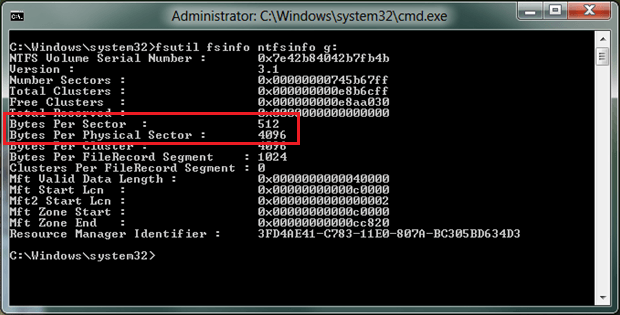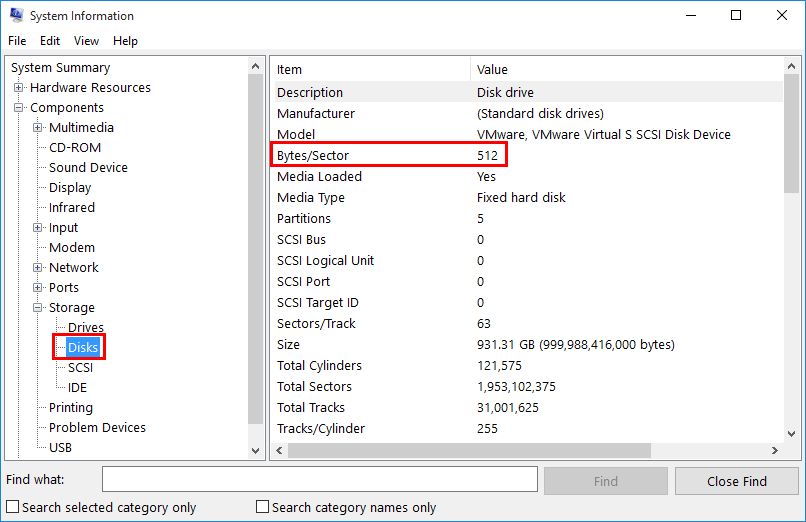What Is Sector by Sector Clone and How to Use It
The sector-by-sector clone feature is a common option in many disk clone software programs. However, many users are unsure when to use it, and whether it's necessary for their specific needs.
To get clear ideas, you need to get the meaning of sector by sector clone, which may do a big favor for you. Please continue to see below. And this article will further introduce you to how to clone hard drive or SSD sector by sector.
What is Sector by Sector Clone?
Sector by sector clone (also called sector by sector copy), as the same suggested, it is a cloning method, which will clone all sectors on the source disk even if the sector is blank or it’s a logically bad sector to the destination disk.
Eventually, you will get the exact copy of a source disk with the same properties like same drive status, drive capacity, drive letter and partitions on the target disk. By the way, the sector is the smallest unit of disk access.
When it comes to disk cloning, there are two primary methods: Intelligent Clone and Sector-by-Sector Clone. Each method has its own strengths and weaknesses, and the right choice depends on your specific needs.
Do I Need Sector by Sector Clone?
When it comes to disk cloning, two primary methods are available: Intelligent Clone and Sector-by-Sector Clone. Each method has its own strengths and weaknesses, and the right choice depends on your specific needs.
You need to use sector by sector clone in the following situations:
- The disk you want to clone is an encrypted disk.
- The data in the source disk is damaged and you need to restore.
Also, sometimes, you don't need to use sector by sector clone:
- The source disk has bad sectors. If you clone disk sector by sector, the bad sectors will be cloned to new disk as well.
- The destination disk is smaller than source disk. In this case, the cloning process will fail due to not enough space.
- The source disk and destination disk has different sector size, for example, 4k native and 512 byte native disk.
Besides, there are some situations you can choose yourself.
- The destination disk is larger than source disk. If you do sector by sector clone, the cloned drive will show wrong size and you cannot directly resize the partition size on the destination disk it.
- You just want a way to replace hard drive to SSD in laptop or desktop without reinstalling.
- You want to create an exact copy of disk for disaster recovery.
Check Sector Size Before Sector by Sector Clone Disk
Performing a sector-by-sector clone involves copying every sector of the source disk to the target disk, including any bad sectors. This method is ideal for situations where an exact replica of the source disk is required, such as when installing an operating system or preserving encryption.
Way 1: Check Sector Size from Command Prompt
1. Run the following command prompt as an administrator. The x: refers to the drive letter that you want to check.
fsutil fsinfo ntfsinfo x:
2. To determine the drive type, you need to find the values for **Bytes Per Sector** and **Bytes Per Physical Sector**. These values can help you identify whether your drive is a traditional 512-byte sector drive or a newer 4K native drive.
3. If you find that the values for **Bytes Per Sector** and **Bytes Per Physical Sector** are the same on both disks, it means that the disks have the same sector size. In this case, you can perform a sector-by-sector clone of the disks.
Sometimes, you may get the Bytes Per Physical Sector : error, make sure that the following registry path exists and set its value to 1.
HKLM\CurrentControlSet\Services\Parameters\Device\
- Name: EnableQueryAccessAlignment
- Type: REG_DWORD
- Value: 1: Enable
Way 2: Check Sector Size in System Information
1. Press Win + R key combination to open Run dialog. Then, type msinfo32 and hit OK to open System Information window.
2. Go to System Summary -> Components -> Storage -> Disks. It will show you the information of all drives on the right side.
3. Find your desired drive and check the value for Bytes/Sector. It should say Bytes/Sector 4096 or Bytes/Sector 512, etc.
Note: The common hard drives (HDDs) owns 512 bytes per sector both on physical and logical sector, and 2048 bytes for CD-ROMs and DVD-ROMs. And Advanced Format Drives (AFD) use 4096 bytes per physical sector but emulate 512 bytes per logical sector.
How to Clone Disk Sector by Sector with Secure Boot
Cloning a disk, whether it's a Hard Disk Drive (HDD) or a Solid-State Drive (SSD), can be a crucial task for various reasons, including data migration, backup, and system recovery. When it comes to cloning, one of the most important considerations is the method of cloning, specifically whether to clone sector by sector or not. Here's how Qiling Disk Master Professional can help:
- Clone all kinds of disk, such as, clone hard drive to larger drive, clone HDD to Samsung SSD, clone SATA to NVMe, clone PCIe SSD, etc.
- Clone MBR disk to GPT or GPT to MBR without losing data. And be sure it's bootable.
- Improve SSD disk performance, such as, reading & writting speed, and prolong its lifespan.
But if you want to clone HDD to smaller SSD or clone hard drive with bad sectors, it's suggested to use another cloning method - Intelligent Clone. Unlike Sector by Sector Clone, it clones only used sectors on a hard drive and skip bad sectors as well.
Cloning a hard drive sector by sector can be a crucial task, especially when dealing with sensitive data or complex system configurations. Qiling Disk Master Professional is a powerful tool that can help you achieve this with ease.
(PS: This software only supports Windows XP, Vista, 7, 8, 8.1, 10, 11. For server users, try Qiling Disk Master Sever!)
Step 1. Select Clone -> Disk Clone on the main console.
Notes:
✿ The Professional edition supports cloning both data disk and system disk. If it is a system disk, the cloned drive will remain bootable.
✿ Upgrading to a smaller Solid-State Drive (SSD) can be a cost-effective way to breathe new life into your system. However, the smaller size may pose a challenge when cloning Windows 10. Fortunately, Qiling Disk Master Professional offers a solution with its System Clone feature.
Step 2. Select the disk you want to clone as the Source disk (here is disk 1); Tick Sector by sector clone option, and click Next button.
Step 3. Select the new SSD as Destination Disk (here is disk 2). Then click Next.
The new SSD will be overwritten or deleted during the sector by sector cloning process, please backup the critical data if you don't want to lose them.
Step 4. Press Proceed>> button to clone disk sector by sector. If your destination disk is SSD, tick SSD Alignment to optimize the reading and writing speed for SSD.
Step 5. Click Finish after the operation is completed.
When cloning a disk, you have the option to choose between two cloning modes: sector by sector and clone only used space. The default mode is to clone only the used space, which saves time and disk space. However, if you select the sector by sector option, the cloning process will copy every sector, including empty ones, from the source disk to the destination disk.
Final Words
You can choose to perform sector by sector clone or not, depending on the situations you are in, if you don't know, read this article carefully to get the answer. In fact, there are some situations you need to use sector by sector clone option, and the best sector by sector clone software - Qiling Disk Master Professional will help you.
Qiling Disk Master Professional is a versatile and powerful software that offers a range of features to help you clone your hard drive with ease. Besides sector by sector cloning, it also supports intelligent cloning, which is ideal for most users.
Related Articles
- 2 Easy Ways to Migrate Windows 11 to a New Computer
Have you installed Windows 11 on your old PC? After buying a new PC, you may want to migrate Windows 11 from the old computer to the new one instead of doing clean install again. How to achieve it? Find two easy solutions below. - How to Transfer Windows 11 to New SSD Step by Step [2 Ways]
Want to transfer Windows 11 from one SSD or another? This article covers the preparations you need to do, and the steps to migrate OS or disk with secure boot. - How to Clone Windows 7 Partition to the Same Drive
You can easily clone Win 7 partition to the same drive and boot from the cloned partition sucessfully. The best disk clone software - Qiling Disk Master helps. - How to Migrate Windows 7 to SSD with Excellent Software
Qiling Disk Master can help to migrate Windows 7 to SSD through two means: backup the system drive to an image file, and then restore it to the SSD, or directly clone the system drive to the new SSD.







